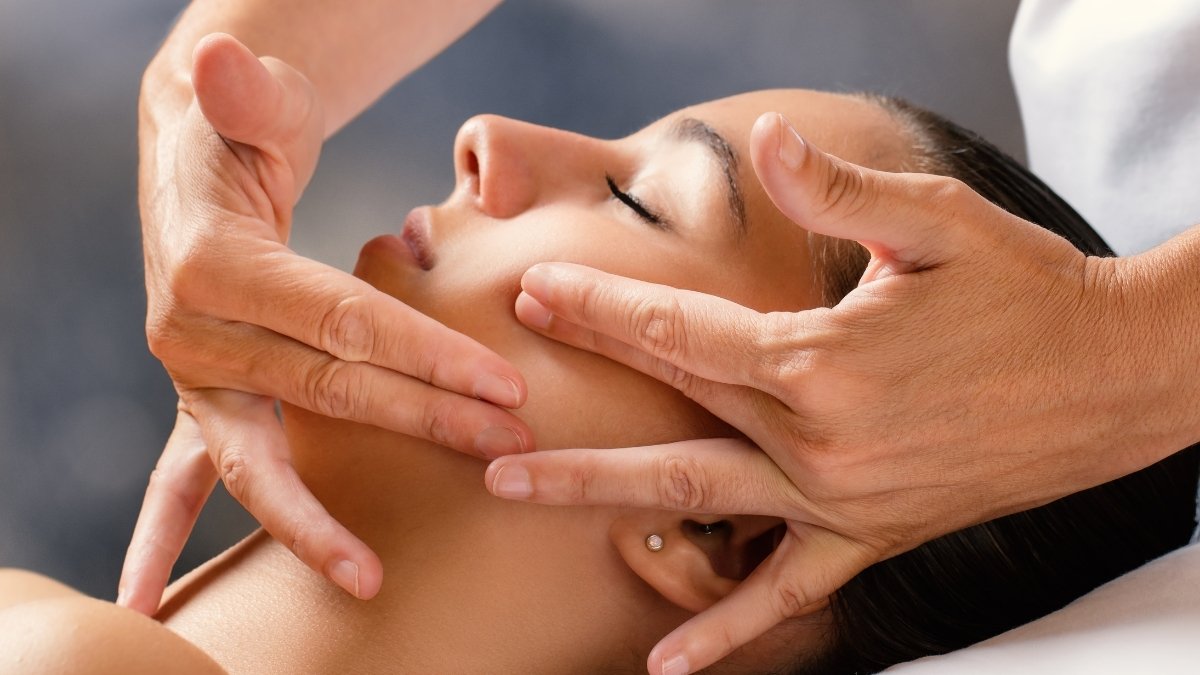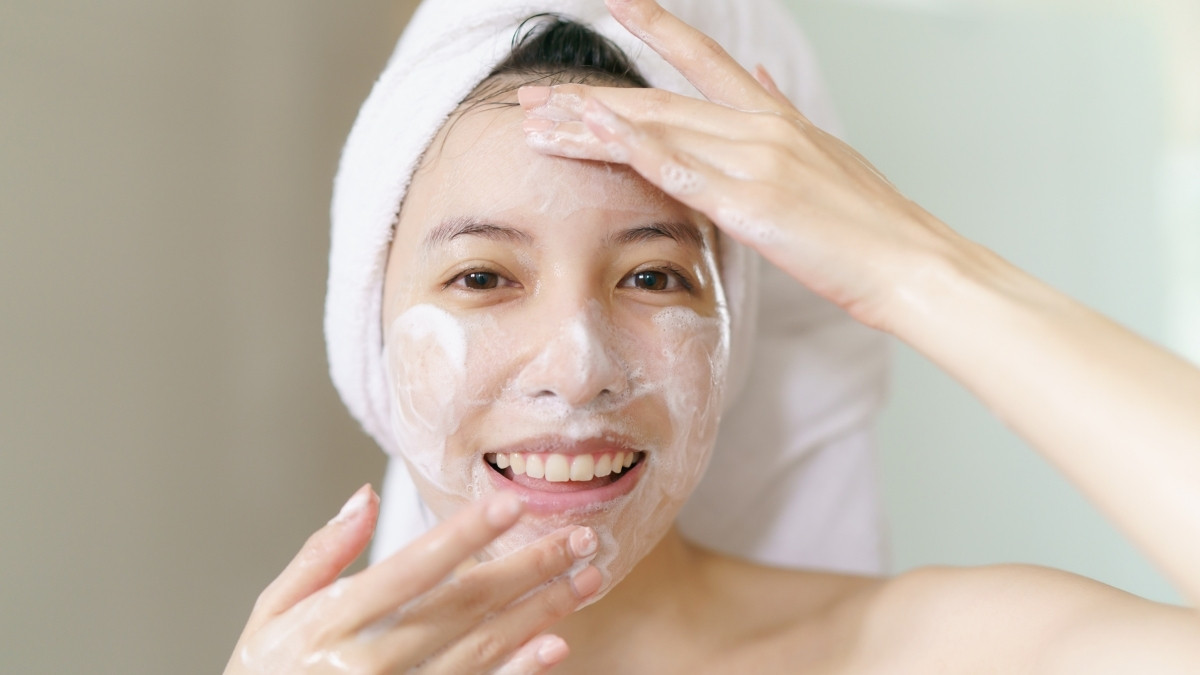The Face-Cleansing Mistake Almost Everyone Makes — and How to Fix It

Here’s a shocking fact: 54% of Americans often skip washing their face before bed. And the ones who do wash? Most are doing it wrong.
Your expensive serums aren’t the problem. Your breakouts, dryness, and dull skin come from face cleansing mistakes you make every single day. You’re using the wrong products, the wrong water temperature, and the wrong technique. Your skin barrier is suffering because of it.
The good news? These mistakes are easy to fix.
In this guide, you’ll learn the #1 cleansing mistake that’s sabotaging your skin (hint: it’s probably sitting in your shower right now). You’ll discover why your facial cleanser choice matters more than the price tag. And you’ll get the exact step-by-step proper face washing method that dermatologists recommend.

No complicated routines. No expensive products. Just simple fixes you can start using tonight.
The Biggest Face-Cleansing Mistake (And Why It’s Damaging Your Skin)
Here’s the truth: most people aren’t using a real facial cleanser at all.
Research shows that 52% of Americans wash their face with hand soap or body wash. Another third just use water. If you’re one of them, your skin is probably dealing with problems you could easily fix.
Water alone can’t clean your face. Think about it like washing greasy dishes. Water rinses off some dirt, but oil, makeup, and sunscreen? They stick around. These are called oil-soluble impurities, and they need a proper cleanser to break them down.

Hand soap and body wash are even worse. They’re made for thick body skin, not your delicate face. Using them strips away your skin’s protective barrier—the layer that keeps moisture in and bacteria out. This leads to dryness, irritation, and breakouts.
Here’s what builds up on your skin when you skip proper cleansing: makeup residue, sunscreen, dead skin cells, excess oil, pollution particles, and bacteria. All of this clogs your pores over time.

The fix is simple: use an actual facial cleanser twice a day. It doesn’t need to be expensive. Just make sure it says “facial cleanser” on the bottle and matches your skin type. Your skin will look clearer within a week.
Most people (65%) don’t know what ingredients to look for in a cleanser. That’s okay—we’ll cover that next.
6 More Face Washing Mistakes You’re Probably Making
You’re using the right cleanser now. Good. But your cleansing technique might still be causing problems. Here are six mistakes that damage your skin without you realizing it.
Mistake #1: Using Hot Water
That steamy hot water feels amazing, right? It’s wrecking your skin. Hot water dilates your blood vessels, causing redness and broken capillaries. It also strips away your skin’s protective oil layer—the one that keeps moisture in and irritation out.

If you have rosacea or eczema, hot water makes it worse. Use lukewarm water instead. It cleans just as well without the damage.
Mistake #2: Over-Washing or Under-Washing
The American Academy of Dermatology says wash twice daily: morning and night. Add one more wash after heavy sweating. That’s it.

Washing more than that strips your natural oils. Your skin fights back by making extra oil, which leads to more breakouts. Washing less lets dirt and oil build up in your pores. Find your balance and stick with it.
Mistake #3: Scrubbing Too Vigorously
Your face isn’t a dirty pan. Stop scrubbing it like one. Aggressive scrubbing triggers inflammation, causes breakouts, and makes your skin produce more oil. Those rough physical scrubs with big granules? They create tiny tears in your skin.

Use gentle circular motions for 30-60 seconds. Let the cleanser do the work. Your fingers should barely touch your skin.
Mistake #4: Not Washing Hands First
Your hands touch door handles, phones, keyboards, and money all day. Then you touch your face with those same hands. You’re transferring bacteria directly onto your skin. This simple mistake causes unnecessary breakouts.

Wash your hands for 20 seconds before touching your face. Every single time.
Mistake #5: Using the Wrong Cleanser for Your Skin Type
Oily skin with a creamy cleanser? You’ll feel greasy. Dry skin with a foaming cleanser? You’ll feel tight and irritated. The wrong cleanser makes your skin problems worse, not better.

Match your cleanser to your skin type. Gel for oily, cream for dry, gentle for sensitive. We’ll cover exactly which type you need in the next section.
Mistake #6: Not Rinsing Thoroughly
You massage in your cleanser for five seconds, then splash water twice. That leaves a film of cleanser on your skin that clogs pores and stops your other products from working.

Massage for 30-60 seconds. Rinse for another 30 seconds. Check your hairline and jawline—cleanser loves hiding there.
These face washing mistakes are easy to fix. Pick one tonight and correct it. Your skin will respond within days.
How to Wash Your Face Correctly: The Dermatologist-Approved Method
You know what not to do. Now here’s exactly how to wash your face correctly. This is the proper face washing technique that dermatologists recommend.

Step 1: Wash Your Hands (20 Seconds) Use soap and warm water. Scrub for the full 20 seconds. This stops bacteria from transferring to your face.
Step 2: Wet Your Face with Lukewarm Water Not hot. Not cold. Lukewarm. This opens your pores without damaging your skin barrier.
Step 3: Apply Cleanser and Massage (30-60 Seconds) Use a dime-sized amount for your whole face. Massage in gentle circles for at least 30 seconds. Most people only wash for 5-10 seconds—that’s not enough time for the cleanser to work. Your cleanser needs time to break down oil and dirt.
Quick tip: Gel cleansers work best on dry skin. Oil cleansers need dry hands and dry skin. Mousse cleansers go on damp skin.

Step 4: Rinse Thoroughly (30 Seconds) Splash lukewarm water at least 10 times. Check your hairline, jawline, and around your nose. Leftover cleanser causes breakouts.
Step 5: Pat Dry with a Clean Towel Don’t rub. Patting protects your skin. Use a clean towel every time—dirty towels carry bacteria.
Step 6: Apply Moisturizer Immediately Put on moisturizer while your skin is still slightly damp. This locks in moisture and supports your skin barrier. Wait and your skin loses hydration.
Choosing the Right Cleanser for Your Skin Type
The perfect cleansing routine starts with matching your facial cleanser to your skin type. Use the wrong one and you’ll make your problems worse. Here’s how to pick the right gentle cleanser.
For Oily Skin: Gel or Foam Cleansers
Your skin makes too much oil, so you need a cleanser that cuts through it without over-drying. Gel and foam-based cleansers work best. They remove excess oil and feel light on your skin.

Look for ingredients like salicylic acid or niacinamide. These help control oil production. Avoid heavy creams—they’ll make you feel greasy.
For Dry Skin: Cream-Based or Hydrating Cleansers
Cream cleansers add moisture while they clean. They don’t strip your natural oils like foaming cleansers do. If your skin feels tight after washing, you’re using the wrong cleanser.

Look for hyaluronic acid and ceramides. These ingredients help your skin hold onto moisture. Skip anything that says “deep clean” or “clarifying”—those are too harsh for you.
For Sensitive Skin: Fragrance-Free, pH-Balanced Formulas
Your skin reacts to everything. Harsh cleansers with sulfates, alcohol, or strong fragrances disrupt your skin barrier and cause redness. You need the gentlest option possible.

Look for labels that say “fragrance-free,” “hypoallergenic,” or “pH-balanced.” Avoid anything with sulfates (like sodium lauryl sulfate), alcohol, or artificial fragrance.
For Combination Skin: Balanced Formulas
You’re oily in your T-zone and dry on your cheeks. Frustrating, right? Use a balanced gel cleanser that cleans without stripping.

You might need to switch formulas with the seasons—lighter in summer, creamier in winter.
Three Ingredients to Always Look For
- Ceramides – Protect your skin barrier
- Hyaluronic acid – Holds moisture in your skin
- Niacinamide – Calms inflammation and controls oil
Three Ingredients to Always Avoid

- Sulfates – Strip natural oils and cause dryness
- Alcohol – Irritates and damages your skin barrier
- Artificial fragrance – Triggers sensitivity and redness
Still confused? Start with a gentle, fragrance-free cleanser for sensitive skin. It works for most people while you figure out your exact skin type.
Final Thoughts:
Most skin problems start with bad cleansing habits. The biggest mistake? Not using a proper facial cleanser at all. Add hot water, rough scrubbing, and dirty hands to the mix, and you’re damaging your skin every single day.
But the fix is simple. Follow the 6-step method: wash your hands, use lukewarm water, massage cleanser for 60 seconds, rinse thoroughly, pat dry, and moisturize immediately. Pick a cleanser that matches your skin type. That’s it.

Start tonight. Choose one mistake from this list and fix it. Wash your hands before touching your face. Switch from hot to lukewarm water. Time your cleansing for a full 60 seconds instead of rushing through it.
Your skin will respond fast. Less redness within three days. Fewer breakouts within a week. Better texture within two weeks.
Proper face cleansing isn’t complicated. It just requires knowing what mistakes to avoid and following a simple, consistent routine. You don’t need expensive products or a 10-step system. You need the right cleanser and the right technique.






